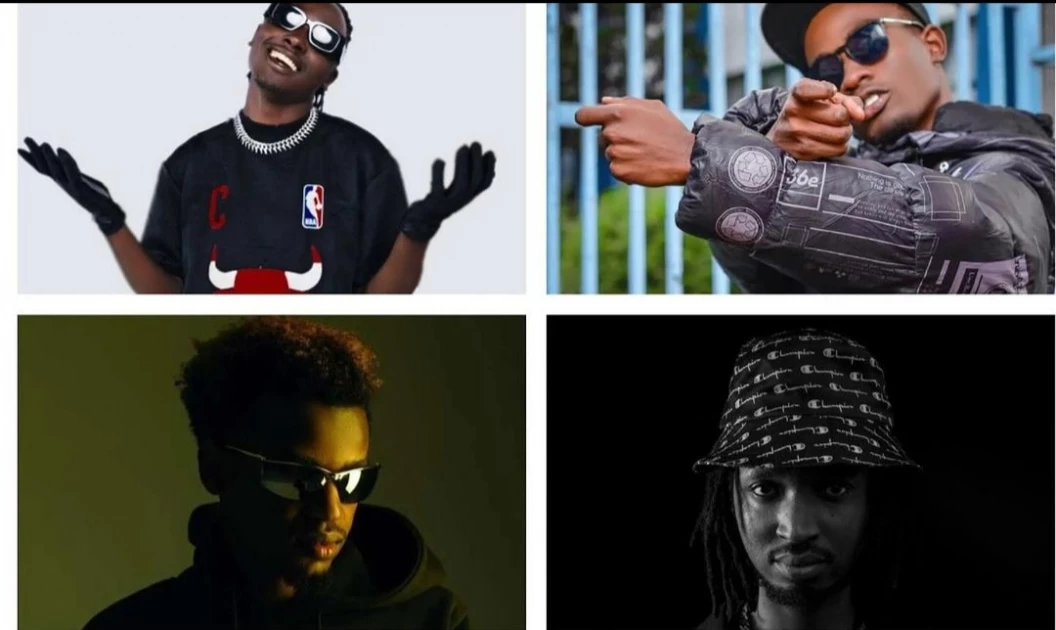Arbantone: Kenya's new sound is taking everyone by storm, but for how long can it last?


Audio By Vocalize
World over, music evolves, birthing new
sounds and vibrations that are merely a mutation of an established sound but
with a few embellishments, a couple tweaks and a funky, youthful touch.
In the late
50s and early 60s, before reggae and rocksteady were born, Ska was the most
popular style of music across Jamaica - enjoyed by all, from the impoverished
natives to the ruling British class and the well-to-do skinheads.
The
fast-paced sound, which dominated Jamaican charts and ruled dance floors across
the Caribbean, would soon be edged out by rocksteady and then, ultimately,
reggae.
Across the
world, from Europe to the US, music has always witnessed resurgencies as
younger players come to the scene with their novel approach, creative touch and
cultural ethos.
In Kenya,
the Gengetone sound quickly took over the music industry from around 2019
running all the way to early 2022 when the sound faced an untimely death due
to, in part, the sound's monotony, largely unpalatable lyrics, scandalous
artists and the public's general fatigue with the sound's monochrome feel.
When it
began, Gengetone inspired a widespread mania with the sound becoming the single
most popular music genre in the country - eventually, even having crossover
appeal to not just a multilayered fanbase but also getting wide airplay in
neighbouring countries.
In fact, so
big was Sailors Gang's hit 'Wamlambez' in Uganda that the 'Parte after Parte'
hitmaker Big Trill immediately expressed his interest in working with the group
after a sold-out Kenyan concert.
"When
it came out, it went viral and Ugandans were singing even without knowing what
it means. Until I came to Kenya, that’s when I knew what it meant,” Big Trill
said then.
A lot happened
in between, and then, because music shall always live on, something else
quickly came to replace the dying Gengetone vibe.
Enter
Arbantone, a hodgepodge of Gengetone and old Jamaican riddims championed by
new, post pubescent rappers with the same Gengetone lyricism and less nuanced
artistic imagery.
Music
producer Motif Di Don has repeatedly claimed to be the Pope of Arbantone music
and has fervently touted the genre's impact and credibility.
"[People]
tried to talk a lot of trash about me when I was trying to save the industry,
saa hii wamekuwa top fans. Never disrespect me again boy I'm never wrong.
Arbantone to the world!" he posted on Instagram earlier in the year.
And because
musical genres never truly die - they transform and build upon one another,
Arbantone borrows heavily from the nonchalance of Gengetone; sexually-charged
lyrics, liberal praise of drug use, pompousness and tawdry music videos.
The pool is
currently congested with many fast-rising players including Maandy, YBW Smith, Soundkraft,
Sean MMG, Lil Maina, Ebola Mkuu, Gody Tennor, Kappy and Tipsy Gee.
These rising
stars have dropped some of the biggest social media songs in the country over
the last several months - Usiniadvice, Lele, Anapiga Pic, Tiktoker, Niko na
Dem, Hii Ndio Inabamba, Dem Mauru, Mbichi and Kinare.
The magic is
simple - grab an old danceable beat (it could be Jamaican or Kenyan) roll into
the studio, scribble down a couple mouthy rhymes and chant along to it.
The result?
A masterpiece which veers intriguingly between the contemporary and echoes of
the past. Also, an irresistibly danceable rhythmic symphony.
Armed with a
fast, pulsating beat, packed with a thunderous bassline and a throbbing
pattern, these Arbantone artists have been breathing new life into 90s and
2000s Jamaican riddims, generating millions of views on TikTok and YouTube and
tearing up the charts on multiple streaming platforms.
The
sometimes-indecipherable Sheng chants rooted deep in the linguistic anals of
Nairobi's Eastlands estates stir up the genre's undeniable glamour.
On TikTok,
these kids are all the rave. They've unapologetically hogged all the challenges
and dominated almost all the playlists from some of the biggest dance groups
and individual TikTok dancing influencers.
Just like in
Jamaica's riddim world, Arbantone artists can all hop onto one beat and each
has the chance to bring out their best as they all jostle for the crown of who
did it best.
Naturally, a
single beat will accommodate disparate ideas and vocal approaches, with each
artist bringing their own fresh take on the fluidity of the beat as well as
injecting their own personality and vibe, all notably distinct in the delivery.
For
instance, on a Christopher Birch riddim, four Arbantone artists all dropped
their individual takes, with online commentators agreeing that Stoopid Boy's 'G
Baga Jat’ easily won the challenge. Maandy, Mejja and YBW Smith all
participated too.
The sound's
popularity seems to also be catching up with some of the A-listers in the
Kenyan music industry.
Speaking
this week, rapper Khaligraph Jones praised the sub-genre, saying that Arbantone
is currently the hottest thing in the market.
"Old
heads msiogope new bloods in the game. If you cement your legacy the right way
you will never be obsolete. Arbantone saa hii imewaka moto!" he shared on
Instagram.
But not
everyone agrees with Khaligraph - female rapper Ssaru sees the wave
differently, blasting the creators for over-reliance on old beats and what she
described as creative redundancy.
"It’s a
good thing but I think wana overuse ideas za watu wengine you know! Ni sawa ku
sample but sasa there’s no way it’s urban because wana sample vitu zenye
zishafanywa," Ssaru told local digital reporters.
"Urban
ni kitu yenye ndio imekuja saa hii... [wanafaa] wakuje na mtindo wao wenyewe
wasi sample sana… eventually hizo sio ngoma zenye zinalast kwa industry, ni
ngoma zenye zinapita na upepo.”
In an
changing music ecosystem that is dominated by playlists, algorithms and social
media, Arbantone artists appear to have understood their market, done their
research and found their niche.
They're also
alive to the fact that, now, millennials, Generation Z ‘ers and curators
identify less and less with genres, instead categorizing their musical tastes
by mood, lyrics, and cultural signifiers that speak to an individual.
On this,
they may be getting it right every single day. But the question still remains,
just how sustainable is this sound? And for how long can it still exist?


Leave a Comment